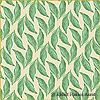And finding excellence
 |
I post this with some trepidation, since I don't want it to be misconstrued as an unnecessary focus on myself. But, I have no one else that I can use for this particular kind of example, so here goes.
I've talked extensively about various conservative groups and individuals in the past few months. I've also become aware that some who call themselves conservative are only so in a few (of their favorite) points. Some are outright libertarians, others have crossed the other side to liberalism
I think we spend an inordinate amount of time talking about, berating, criticising and moaning about liberals. Many conservatives have made this their mission (see Michelle Malkin here, who has a new book out on Obama).
I've always refrained from using my blogs as my sounding boards against liberals. I think it is far more important to put conservatives on track, or to point out their errors. This way, a real conservative body can be built. If we blatantly follow every conservative, just because he is not a liberal, then we have short-changed ourselves and the movement too.
But, one important thing is to DO things, as I wrote in a previous post on traditionalism, where small steps a movement make. This is where each individual behaves like a conservative, and not just talks about it. And since this world is a liberal world, that becomes much more difficult than it sounds. But, therein lies the challenge, and not only that, our very survival.
If I can use myself as an example:
I started out in experimental film. I loved handling celluloid. I would shoot, process and edit all my (very short) films myself. But, I found "art" film to be a dead-end. Rather than glorify art, it has become a hotbed for self-expression of the worst sort. Many (the majority) of the films I watched were, well, unwatchable. Aggressively so.
So, I left, rather than fight the failing system. I found textile design, which ironically attracted me because of the same hands-on, textural effect that I liked about film. Then I encountered another problem. I had very little drawing and painting background, and to my great surprise, our design instructors were just not willing (or able) to teach us those fundamentals. I started taking courses at various school boards, where I discovered a hidden gem of true artists, who I believe have been pushed out of the non-art culture prevalent in colleges and universities.
But what about design? Again, I found a vindictive hate of non-weird, non-edgy designs. Also, anything that looked like it had not been done using the much-touted photocopier or computer graphics, was frowned upon. It is too “old-fashioned” was the phrase. And all we want to be is modern, no?
In the end, I even left that group – psychologically, at least. Ordinary people seem to appreciate my efforts. Women like birds and flowers on their furniture fabric. Color and texture are always welcome. I hardly get a “what is that” when I show my work. I think that is the biggest compliment. My colleagues would beg to differ, of course.
My point is that all this is not a matter of perseverance; it is also a matter of pursuing excellence. If we give up on that, no matter how stubborn and persistent we may be, it will all come out wrong. We have to keep these traditions going strong, we have to learn them and learn how to use them. And then use them.
The funny thing about tradition is that it changes subtly through time. Innovations happen by building the new from the old; by adapting the past into our own present environments. This is what modern artists just don’t get. They are stuck in a rut with their experimentations and self-expression. The true inspiration and, paradoxically, change comes by pursuing tradition.














